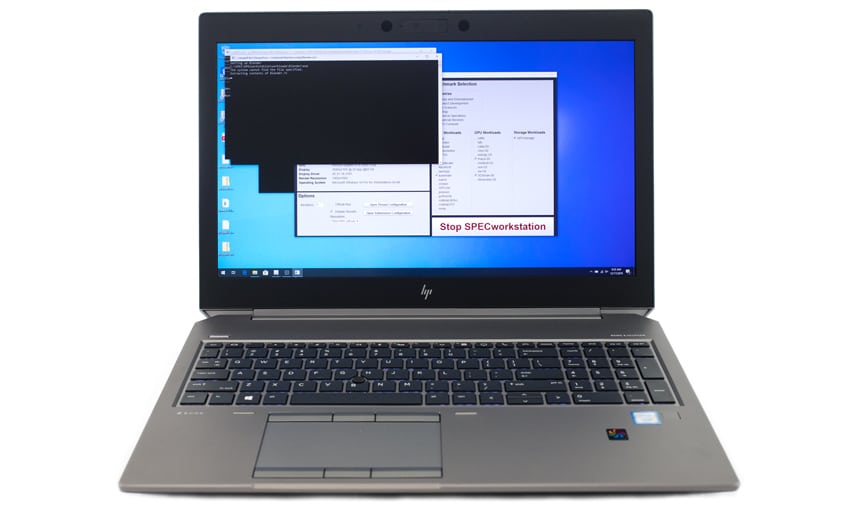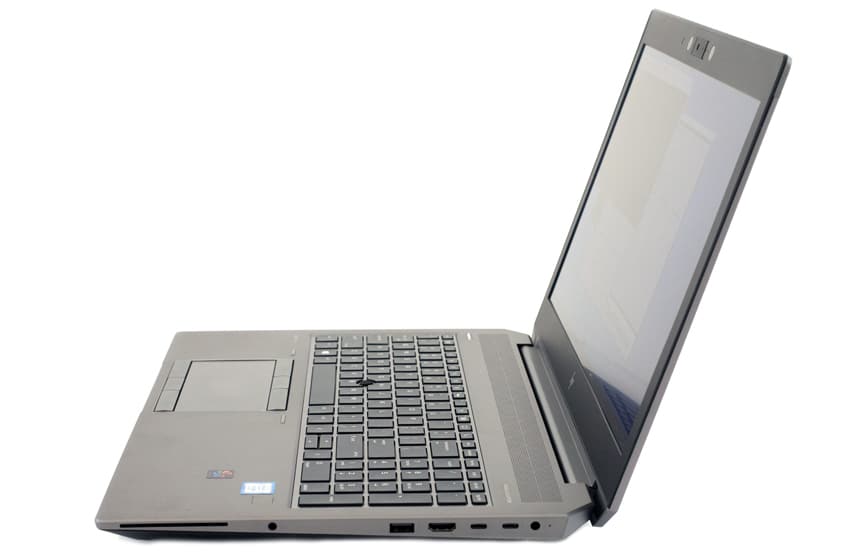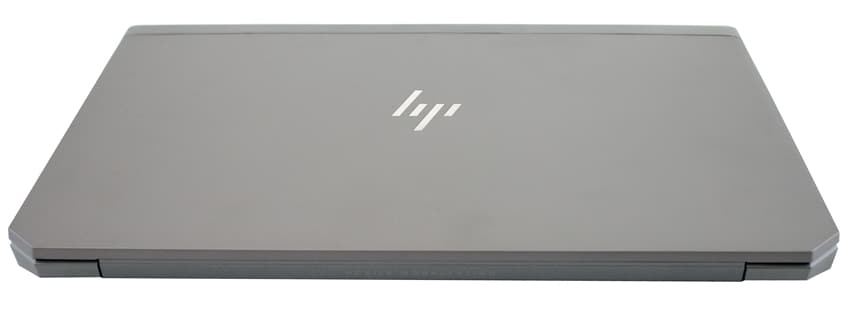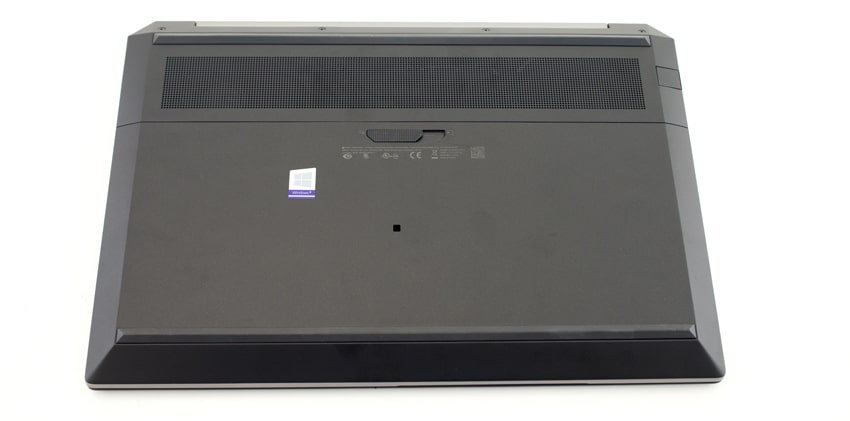The ZBook 15 G6 is the newest addition to the company’s power-driven mobile workstation line. The next-gen HP laptop features a range of upgraded hardware over the G5 model, including the latest 9th Gen Intel Core i9 and Xeon Processors (for complex, multithreaded applications), a generous 128GB of RAM, and three GPU options including the new NVIDIA Quadro RTX 3000. The new ZBook can also be outfitted with up to three 1TB PCIe Gen 3 x4 NVMe TLC SSDs and features a wide range of connectivity including 3 USB 3.0 ports, 2 USB Type-C ports (Thunderbolt 3 + DP 1.4 + USB 3.1 Gen 2) and an HDMI port.

Though you can certainly equip the workstation with an impressive set of components, those looking to spend less can tone it down and customize their build to fit a range of budgets. For example, the ZBook 15 G6 features a wide range of storage options, such as M.2 PCIe, M.2. SATA and 2.5-inch SATA SSDS, while graphics also include lesser options like the Intel UHD Graphics 630 and NVIDIA Quadro T1000 and T2000 cards.
The ZBook 15 G6 also comes equipped with a lot of useful functionality for those who often find themselves in virtual meetings and collaboration scenarios, or simply for those who use multimedia features for personal use. For example, the HP Privacy Camera physically covers the camera when it’s not in use, while the HP Collaboration Keyboard allows users to easily adjust the volume, join/end a call, and mute/unmute people. The ZBook 15 G6 also supports a 3rd microphone designed to pick up other people’s voices in a meeting room, which can will benefit from HP’s ambient noise cancellation technology.
For this review, our build includes an Intel Xeon E-2286M CPU, 64GB of DDR4, 2667MHz RAM, 1TB NVMe SSD, Windows 10 Pro 64 Workstation Edition, and an NVIDIA Quadro RTX 3000 GPU.
HP ZBook 15 G6 Specifications
| Form factor |
|
| Processor |
|
| Graphics |
|
| Display |
|
| Memory |
|
| Storage options |
|
| Audio |
|
| Communications |
|
| Expansion slots |
|
| Ports |
|
| Input devices / Camera |
|
| Battery |
|
| Power |
|
| Security |
|
| Operation Systems |
|
| Warranty |
|
Design and build
At 5.79lbs (weight will differ depending on components) and just 1-inch thick, the durable ZBook 15 G6 is highly portable and will fit in pretty much any carrying bag. It also features an nice aluminum build with a slick metallic finish.

On the left side of the ZBook is the Security cable slot, RJ45 port, two USB 3.0 ports (one for charging), and an SD Card Reader. Turning it around to the other side reveals the Smart Card Reader, Headphone/Microphone Combo, a USB 3.0 port, an HDMI port, two Thunderbolt (USB-C) ports, and the power connector.

Facing the screen shows the backlit keyboard, which features the HP Collaboration Keyboard for easy access to volume adjustment, joining/ending a call, and muting/unmuting people. The touchpad features 3 select buttons on both the top and bottom, with 2-finger scrolling and 2-finger zoom (pinch) on the center pad itself. There’s also a color collaboration sensor for those who have the HP DreamColor display option. Unfortunately, the touchpad itself doesn’t click, only the buttons do. This can be a bit annoying and can slow down workflows for those who don’t use a mouse. It’s definitely and old-school design.
Along the top of the display is the web cam w/ Privacy Camera Shutter (a physical shutter the can be manually slid over the camera to protect users from malicious surveillance), an infra red camera and the HP World Facing Microphone.
The bottom of the G6 workstation shows horizontal ventilation along the top, as well as the tool less access lock and keyboard liquid drain hole.

As expected, the screen is bright and beautiful and is perfect for those working in areas such as content creation and design.
The most powerful GPU option is the NVIDIA Quadro RTX 3000. This PCI Express 3.0 x 16 professional graphics card is powered by the NVIDIA Turing architecture and the NVIDIA RTX platform, which allows designers and artists to leverage hardware-accelerated ray tracing, deep learning, and advanced shading. It features 6GB of GDDR6 and is equipped with 2,304 CUDA Parallel-Processing Cores. Though it’s the entry level model of the RTX line, it still packs a serious punch and is roughly on par with the GTX 1080 desktop GPU.
NVIDIA RTX 3000 specifications
| CUDA Parallel-Processing Cores | 2,304 |
| NVIDIA Tensor Cores | 288 |
| NVIDIA RT Cores | 36 |
| GPU Memory | 6GB GDDR6 |
| Memory Bandwidth | 336 GBps |
| Memory Type | GDDR6 |
| FP32 Performance | 6.4 TFLOPS |
| Memory Speed | 14000 MHz |
| Graphics Bus | PCI Express 3.0 x 16 |
| Memory Bus Width | 192 Bit |
| Pipelines | 1920 – unified |
Performance
To see what the HP ZBook 15 G6 can do, we put it through three resource-intensive tests. These tests are also designed to gauge the capabilities of the equipped Quadro NVIDIA Quadro RTX3000. We will be comparing it to the HP 14u G6 workstation. This is less of a which is better, and more of a what to expect comparison. For example, the 14u comes equipped with an Intel Core i7-8665U CPU, 32GB of DDR4 2400MHz of RAM, and an AMD Radeon Pro WX32000 (4G VRAM) GPU.
This first test is the SPECviewperf 13 benchmark, which is the worldwide standard for measuring graphics performance based on professional applications. SPECviewperf runs 9 benchmarks called “viewsets,” which represent graphics content and behavior from actual applications and include categories such as 3D Max, CATIA, Creo, Energy, Maya, Medical, Showcase, Siemens NX, and Solidworks.
| SPECviewperf 13 | ||
|---|---|---|
| Viewsets | HP ZBook 15 G6 (NVIDIA Quadro RTX 3000) |
HP ZBook 14u G6 (AMD Radeon Pro WX32000) |
| 3dsmax-06 | 145.3 | 14.6 |
| Catia-05 | 217.39 | 22.41 |
| Creo-02 | 199.95 | 18.32 |
| Energy-02 | 31.07 | 1.45 |
| Maya-05 | 210.88 | 22.57 |
| Medical-02 | 66.02 | 2.35 |
| Showcase-02 | 71.76 | 8.26 |
| Snx-03 | 224.25 | 5.15 |
| Sw-04 | 143.81 | 36.37 |
The ZBook 15 G6 recorded very impressive results, while the 14u performed well for its class and price point.
We also ran SPECworkstation3, a test that specializes benchmark designed for testing all key aspects of workstation performance; it uses over 30 workloads to test CPU, graphics, I/O, and memory bandwidth. The workloads fall into broader categories such as Media and Entertainment, Financial Services, Product Development, Energy, Life Sciences, and General Operations. We are going to list the broad-category results for each, as opposed to the individual workloads. The results are an average of all the individual workloads in each category.
| SPECworkstation3 | ||
|---|---|---|
| Category | HP ZBook 15 G6 (NVIDIA Quadro RTX 3000) |
HP ZBook 14u G6 (AMD Radeon Pro WX32000) |
| M&E | 2.29 | 0.88 |
| ProdDev | 2.17 | 1.58 |
| LifeSci | 2.1 | 0.78 |
| Energy | 1.37 | X |
| FSI | 2.14 | 0.78 |
| GeneralOps | 1.72 | 1.25 |
| GPU Compute | 2.79 | 0.71 |
Again, the ZBook G6 showed fantastic performance, showing the huge difference between the two class of G6 workstations.
Next up is the Environmental Systems Research Institute (Esri) benchmark. Esri is a supplier of Geographic Information System (GIS) software. Esri’s Performance Team designed their PerfTool add-in scripts to automatically launch the ArcGIS Pro. This application uses a “ZoomToBookmarks” function to browse various pre-defined bookmarks and create a log file with all the key data points required to predict the user experience. The script automatically loops the bookmarks three times to account for caching (memory and disk cache). In other words, this benchmark simulates heavy graphical use that one might see through Esri’s ArcGIS Pro software.
The tests consist of three main datasets. Two are 3-D city views of Philadelphia, PA and Montreal, QC. These city views contain textured 3-D multipatch buildings draped on a terrain model and draped aerial images. The third dataset is a 2-D map view of the Portland, OR region. This data contains detailed information for roads, landuse parcels, parks and schools, rivers, lakes, and hillshaded terrain.
First up is Montreal. For drawtime, the ZBook 15 G6 posted an average drawtime of 00:01:30.906, while recording an average and minimum FPS of 498.57 and 217.17, respectively. The ZBook 14u G6 posted 00:01:30.17, 92.89, and 42.73in average drawtime, FPS and minimum FPS, respectively.
| ESRI ArcGIS Pro 2.3 Montreal | |
|---|---|
| Drawtime | Average |
| HP ZBook 15 G6 (NVIDIA Quadro RTX 3000) | 00:01:30.906 |
| HP ZBook 14u G6 (AMD Radeon Pro WX32000) | 00:01:30.17 |
| Average FPS | Average |
| HP ZBook 15 G6 (NVIDIA Quadro RTX 3000) | 498.57 |
| HP ZBook 14u G6 (AMD Radeon Pro WX32000) | 92.89 |
| Minimum FPS | Average |
| HP ZBook 15 G6 (NVIDIA Quadro RTX 3000) | 217.17 |
| HP ZBook 14u G6 (AMD Radeon Pro WX32000) | 42.73 |
Next up is our Philly model, where the new ZBook posted an average drawtime of 00:01:01.064, with an average and minimum FPS of 140.623 and 73.246, respectively. The HP ZBook 14u G6 showed 00:01:00.370 in average drawtime, 104.73 in average FPS and 59.65 in average minimum FPS.
| ESRI ArcGIS Pro 2.3 Philly | |
|---|---|
| Drawtime | Average |
| HP ZBook 15 G6 (NVIDIA Quadro RTX 3000) | 00:01:01.064 |
| HP ZBook 14u G6 (AMD Radeon Pro WX32000) | 00:01:00.370 |
| Average FPS | Average |
| HP ZBook 15 G6 (NVIDIA Quadro RTX 3000) | 341.39 |
| HP ZBook 14u G6 (AMD Radeon Pro WX32000) | 104.73 |
| Minimum FPS | Average |
| HP ZBook 15 G6(NVIDIA Quadro RTX 3000) | 171.98 |
| HP ZBook 14u G6 (AMD Radeon Pro WX32000) | 59.65 |
Our last model is of Portland. Here, the ZBook 15 G6 recorded an average drawtime of 00:00:33.811, while average and minimum FPS showed 4,012.02 and 1,504.01, respectively. The ZBook 14u G6 showed results of 00:00:30.741 in average drawtime, 267.418 in average FPS and 202.976 in average minimum FPS.
| ESRI ArcGIS Pro 2.3 Portland | |
|---|---|
| Drawtime | Average |
| HP ZBook 15 G6 (NVIDIA Quadro RTX 3000) | 00:00:33.811 |
| HP ZBook 14u G6 (AMD Radeon Pro WX32000) | 00:00:30.741 |
| Average FPS | Average |
| HP ZBook 15 G6 (NVIDIA Quadro RTX 3000) | 4,012.02 |
| HP ZBook 14u G6 (AMD Radeon Pro WX32000) | 267.418 |
| Minimum FPS | Average |
| HP ZBook 15 G6 (NVIDIA Quadro RTX 3000) | 1,504.01 |
| HP ZBook 14u G6 (AMD Radeon Pro WX32000) | 202.976 |
Conclusion
The HP ZBook 15 G6 is power-driven mobile workstation that has proven to us that it is capable of effectively running virtually any resource-intensive professional application that comes its way. The new ZBook is a noticeable improvement over the previous G5 generation, as it features more powerful processors, better professional graphics, and more maximum RAM. It also features a brilliant 100% Adobe RGB UHD display and built in collaborative features for professionals who do a lot of on-site and virtual conferencing. Outfitting the ZBook 15 G6 can get seriously expensive, but well worth it if you have the budget. Top of the line build includes an Intel Xeon processor, up to 128 GB nECC DDR4 (2667 MHz), up to 2x 2TB NVMe SSD storage, and an NVIDIA Quadro RTX3000 (6GB memory).
As for its performance, we compared the HP ZBook 15 G6 to the HP ZBook 14u G6 to show what both workstations. Though certainly not in the same class, the results will help potential buyers decide which best meets their needs: a more budget-friendly workstation aimed at entry to midrange users, or a more expensive notebook geared towards upper-range, content professionals that need high-end components. Looking at ESRI ArcGIS Pro performance, the ZBook 15 G6 showed impressive scores with average FPS and Minimum FPS in all three of our tests, sometimes more than quadrupling its performance over the 14u. SPECworkstation3 and SPECviewperf 13 told a similar story, as the G6 ZBook scored some seriously high marks. Of course, users will have to spend quite a bit if they want to see these same results, as our test-model would cost roughly $4,400.
While our comparisons definitely wasn’t apples to apples, comparing a modern Z-Series with a 14u, it is interesting to see the performance difference that the NVIDIA Quadro RTX 3000 (and a system that supports) it can bring. Users in the market for a machine that can deliver tremendous performance for their graphic needs, can hedge a safe bet with the HP ZBook 15 G6.




 Amazon
Amazon